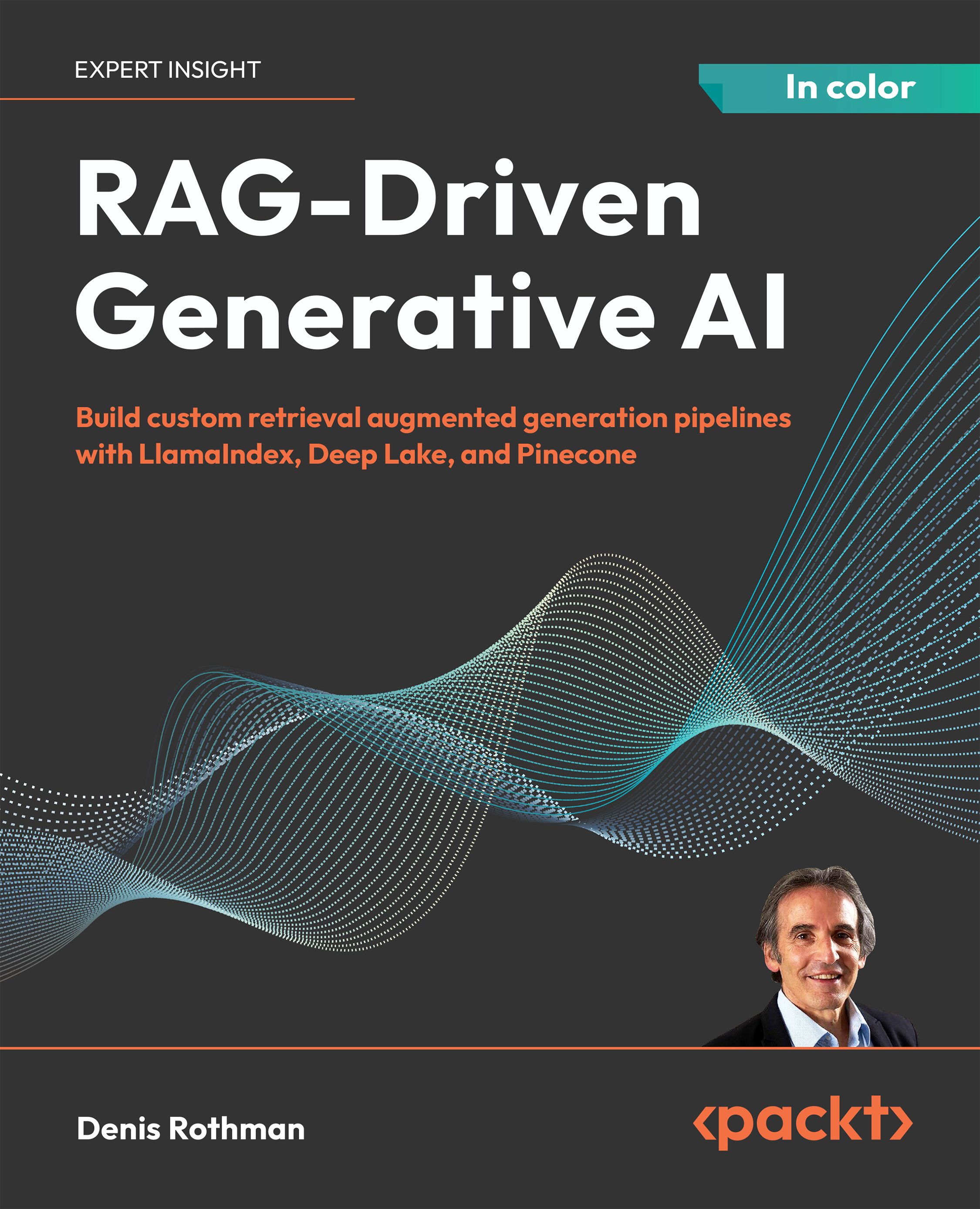Organizing RAG in a pipeline
A RAG pipeline will typically collect data and prepare it by cleaning it, for example, chunking the documents, embedding them, and storing them in a vector store dataset. The vector dataset is then queried to augment the user input of a generative AI model to produce an output. However, it is highly recommended not to run this sequence of RAG in one single program when it comes to using a vector store. We should at least separate the process into three components:
- Data collection and preparation
- Data embedding and loading into the dataset of a vector store
- Querying the vectorized dataset to augment the input of a generative AI model to produce a response
Let’s go through the main reasons for this component approach:
- Specialization, which will allow each member of a team to do what they are best at, either collecting and cleaning data, running embedding models, managing vector stores, or tweaking generative...

































































